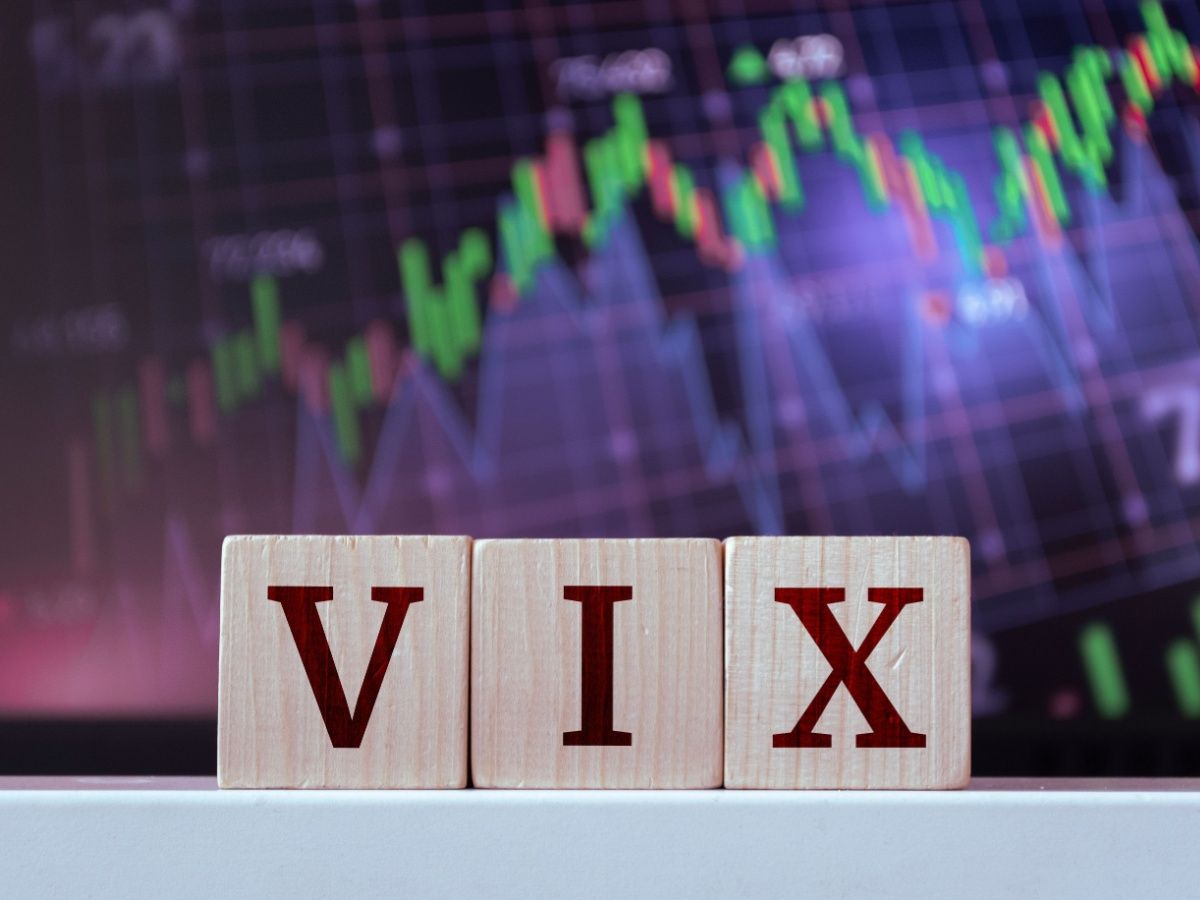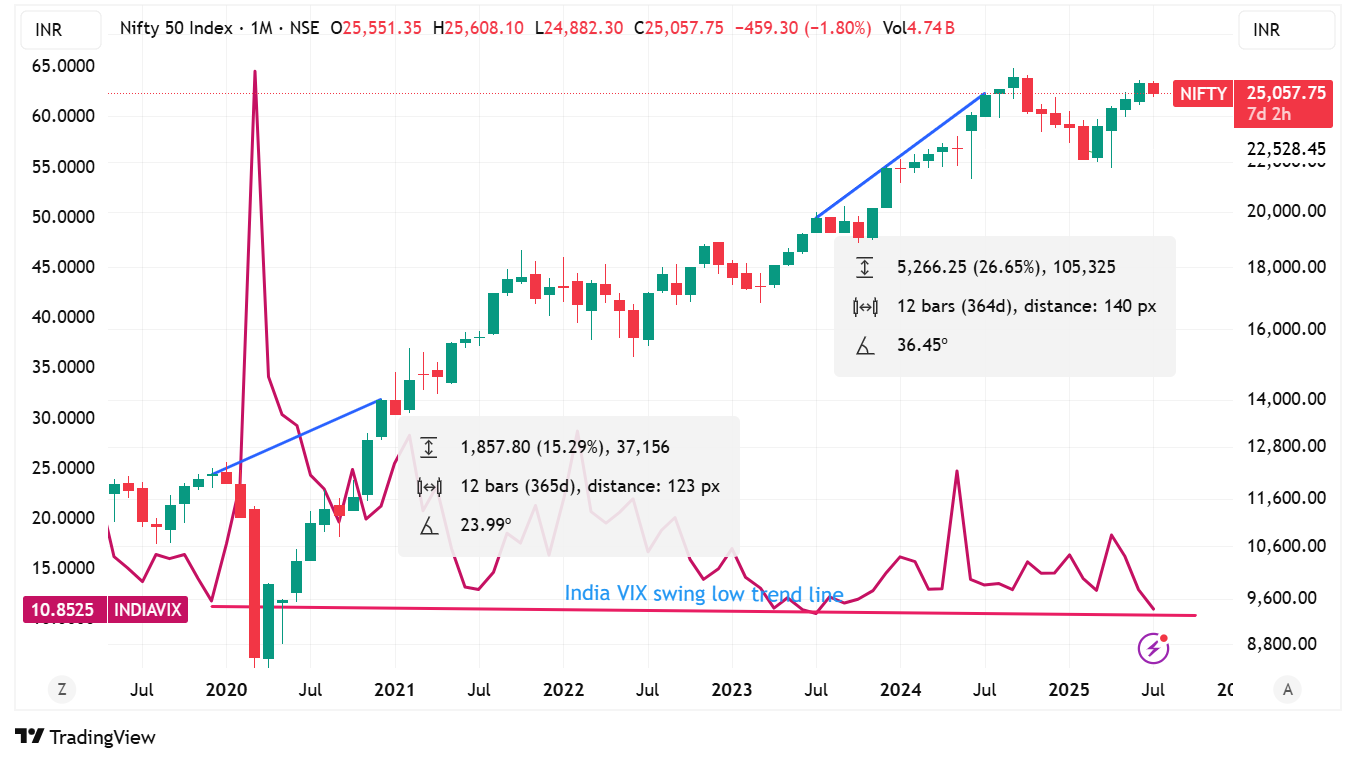Market News
India VIX at multi-year lows: Calm before the storm or missed opportunity?

4 min read | Updated on July 24, 2025, 15:15 IST
SUMMARY
NIFTY50 and SENSEX have traded in a broad consolidation range for a period of over a month. The India VIX remains one of the key indicators which is often referred as fear gauge index also trades at mult-year lows. It indicates a reduced volatility and calmness in the markets. However, there is a silver lining to this trend whsich usually leads to a period of sharp rally in the coming 12 months in the markets.

Low VIX period often indicates absence of clear direction in the markets. Image source: Shutterstock.
Indian markets are trading in a broad range of 500 points from 25,000 to 25,500 on the NIFTY50. The range-bound movement is discomforting traders and short-term investors who aim to capitalise on big moves in the market. The consolidation in Indian markets came at a time when other global indices are trading at record high levels.
The calmness in the Indian markets can be assessed in many ways. India's volatility index, also known as India VIX, is a key metric to track. The volatility index gauges market mood and expected movement in markets for the coming 30 days. For eg, if the India VIX is trading at 20, it means the index is expected to move 20% on an annualised basis for the next 30 days.
Historically, the volatility index is used to gauge the fear and uncertainty sentiment in the index. For India VIX, it helps in ascertaining the volatility in the NIFTY50 index for the coming 30 days. The VIX is derived from option prices, which are used for hedging against market movements. A higher volatility index, or VIX, indicates sharp swings in the markets on either side. A VIX of 20 and above usually indicates an expected sharp and wild swings in the market. For example, during the crisis period like Covid-19, India VIX shot up to 60, which led to more than 30% fall in the NIFTY50.
Similarly, a low reading of VIX, usually between 10 to 15, is considered to be a period of calmness in the index. Currently, the India VIX is trading at 10.4, which is nearly at multi-year lows, or the levels last touched in July 2023. The low VIX is often considered a positive markets as it indicates lower volatility or the absence of sharp moves. It also leads to lower option prices and thus lower participation of traders in the derivatives market.
What does the current low VIX scenario indicate?
The current low VIX scenario indicates the absence of a clear direction for Indian markets as it undergoes a brief consolidation period. For Indian markets, the absence of positive triggers and fresh buying at higher levels is keeping the Indian markets in check and below the 25,500 levels. On the other hand, there is also an absence of selling pressure, which usually leads to price correction in the markets.

However, there is a silver lining to this suppressed VIX period. A prolonged period of lower or suppressed VIX is often followed by a period of strong bullishness. The previous two instances in the past five years suggest that a period of low VIX or near the level of 10 has led to extreme bullishness in the coming 12 months.
In the current scenario, the NIFTY50 or the Indian markets are witnessing extreme calmness as earnings failed to cheer investor confidence to add fresh positions at higher levels. On the downside, investors didn't felt to exit from current positions, leading to severe selling pressure in the market. Collectively, it has led the index to consolidate between 25,000 to 25,500 levels for over a month now. Experts believe that the US-India trade deal, buoyancy in Q2 earnings could provide the necessary boost to the investor sentiments. .
About The Author
Next Story

